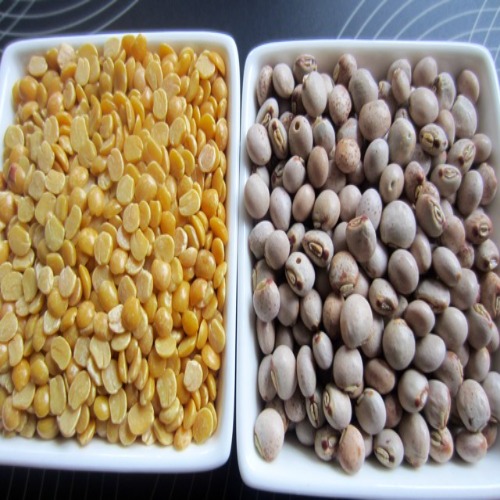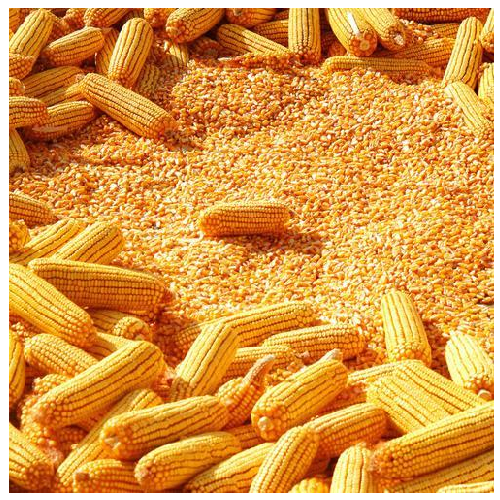Hardwood Charcoal
Pigeon Peas
Common Names: arhar, tur, red gram. Botanical: Cajanus cajan Family: Fabaceae
Uses And Benefits: Though mainly cultivated for its edible seeds, Cajanus cajan can be considered a multipurpose species. Pigeon pea stems are a good fuel source, valued for pigeon pea's fast-growing habit, though their energy value is half that of charcoal. Stems and branches of pigeon pea are also used for basketry. Among other uses of pigeon pea, trials have shown a potential use as a raw material for paper pulp. Pigeon pea also contributes to the environment through its use in alley cropping and as a windbreak, cover crop, shade plant and green manure.
It uses in animal feeding. The leaves and pods are valuable and palatable protein-rich fodder. Leaves are sometimes used to replace alfalfa in ruminant diets where alfalfa cannot be grown. Seed processing by-products, and sometimes the whole seeds, are used as livestock feed. The seeds can be fed to poultry and, in Hawaii, mixtures of pigeon pea with maize grain were successful. Bees actively feed on pigeon pea and produce honey with a distinctive color (greenish) in the comb. Pigeon pea is also a good host for lac insects and silkworms. Plant breeders have bred varieties adapted to drier conditions, more resistant to disease and suited to different production systems and cropping cycles.
Packing: customize/ 10 kg /25 Kg /50Kg bags Container Load: 20 Feet 15 ~ 20MT (Approx) 40 Feet 24 ~ 26MT (Approx)
Sesame Seed
Common Names: Sesame seed Family: Pedaliaceae
Uses And Benefits:
Sesame seeds are rich in protein, vitamins, minerals, and antioxidants. They are commonly added to certain foods to provide a nutty flavor and crunchy texture.
Lower Your Cholesterol, Fight Infections, Oral Health, Oral Health, Controls Blood Pressure, Manages Diabetes, Weight Loss.
Sesame seeds are also used as an ingredient in soap, cosmetics, lubricants, and medicines.
Packing: customize/ 10 kg /25 Kg /50Kg bags Container Load: 20 Feet 15 ~ 20MT (Approx) 40 Feet 24 ~ 26MT (Approx)
Turmeric
Botanical: Curcuma longa L Family: Zingiberaceae
Uses and Benefits:
- Turmeric is used to flavor and to color foodstuffs. It is a principal ingredient in curry powder. Turmeric oleoresin is used in brine pickles and to some extent in mayonnaise and relish formulations, non-alcoholic beverages, gelatins, butter, and cheese, etc. The color curcumin extracted from turmeric is used as a colorant. Turmeric is also used as a dye in the textile industry. It is used in the preparation of medicinal oils, ointments, and poultice. It is stomachic, carminative, tonic, blood purifier, and antiseptic. It is used in cosmetics. The aqueous extracts have biopesticidal properties.
- Turmeric is used for arthritis, heartburn (dyspepsia), joint pain, stomach pain, Crohn's disease and ulcerative colitis, bypass surgery, hemorrhage, diarrhea, intestinal gas, stomach bloating, loss of appetite, jaundice, liver problems, Helicobacter pylori (H. pylori) infection, stomach ulcers, irritable bowel syndrome (IBS), gallbladder disorders, high cholesterol, a skin condition called lichen planus, skin inflammation from radiation treatment, and fatigue.
- It is also used for headaches, bronchitis, colds, lung infections, fibromyalgia, leprosy, fever, menstrual problems, itchy skin, recovery after surgery, and cancers. Other uses include depression, Alzheimer's disease, swelling in the middle layer of the eye (anterior uveitis), diabetes, water retention, worms, an autoimmune disease called systemic lupus erythematosus (SLE), tuberculosis, urinary bladder inflammation, and kidney problems.
- Some people apply turmeric to the skin for pain, ringworm, sprains and swellings, bruising, leech bites, eye infections, acne, inflammatory skin conditions and skin sores, soreness inside of the mouth, infected wounds, and gum disease.
- In food and manufacturing, the essential oil of turmeric is used in perfumes, and its resin is used as a flavor and color component in foods.
Packing: customize/ 10kg/ 20 kg/ 25 kg /50Kg paper / pp bags Container Load: 20 Feet 15 ~ 18 MT (Approx) 40 Feet 25 ~ 28 MT (Approx)
Wheat Flour
Common Names: Wheat Flour Botanical: Triticumspp Family: Poaceae
Uses And Benefits
- White and whole-wheat flour are key ingredients in baked goods, such as bread. Other wheat-based foods include pasta, noodles, semolina, bulgur, and couscous.
- Enriched wheat flour may be a good source of iron, thiamine, niacin, calcium, and vitamin B6, in addition to the above nutrients.
- Proven as the most beneficial food for healthy living by researchers, and such benefits depend on the form of intake. Whole wheat flour is produced by stone grinding of whole kernels containing high minerals and vitamins which helps in the regulation of the blood glucose levels in diabetic patients and lowers risks of heart diseases owing to its comparatively low-fat content.
- Adding whole wheat flour to your diet is a serious decision that you can afford to enhance and assure overall wellness of physical, mental health and beauty. It also provides essential energies for the body to function efficiently.
- Cleanses your system, Prevents breast cancer, Improves mental health, Prevents strokes, Regulates PMS symptoms, Distributes fat, Aids digestion, Prevents weight gain, Boosts eye health, Protects from hair damage, Prevents skin cancers and provides beautiful skin.
Packing: customize/ 10 kg /25 Kg /50Kg bags Container Load: 20 Feet 15 ~ 20MT (Approx) 40 Feet 24 ~ 26MT (Approx)
Yellow Corn Animal Feed
Uses And Benefits:
Production: Yellow corn is a versatile cereal grain that has many uses, including as animal feed, in food, and in industry:- Animal feed: Yellow corn is a key component of animal feed, providing energy, protein, and other nutrients for livestock, poultry, and aquaculture. It can be used in a variety of forms, including whole grain, ground grain, silage, and whole plants harvested before maturity.












